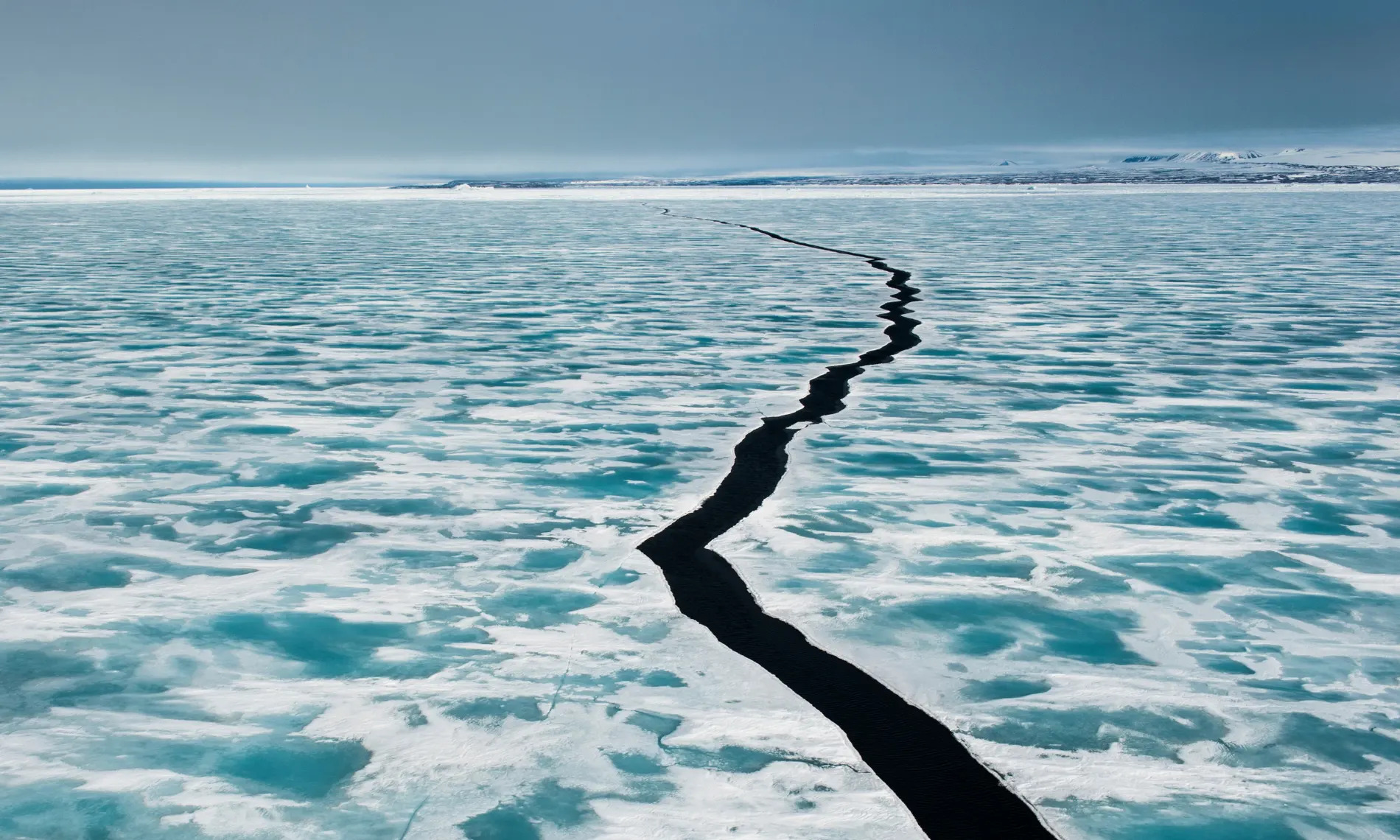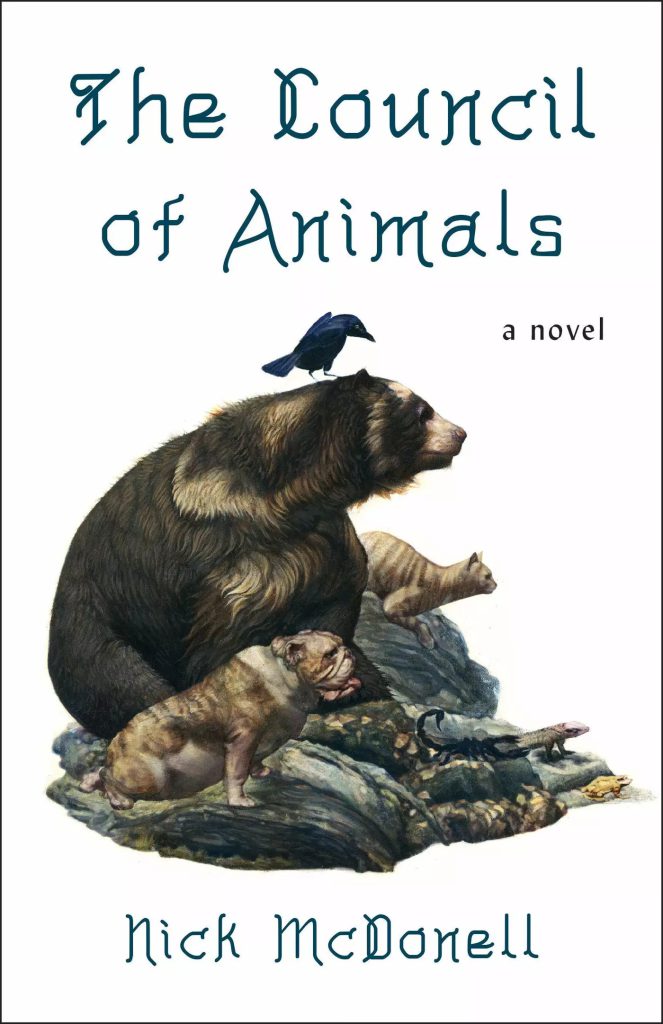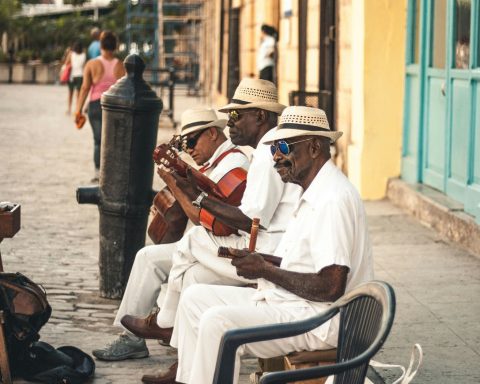|
Getting your Trinity Audio player ready...
|
For years I lived with the Inuit community in Canada’s far north. But it was only later, when the suicides began, that I learned of the epidemic of abuse that had unfolded during that time.
Looking back on it now, I have to be careful about reconstructing or selecting memories in the light of all that transpired. In 1970, as part of my work for a research group within the Canadian Department of Indian and Northern Affairs, I moved to the Arctic and began learning the Inuit language, Inuktitut. My girlfriend, Christine, and I ended up living in a settlement named Sanikiluaq, located on the Belcher Islands, some 90 miles from the Hudson Bay coast of Arctic Quebec.
The Canadian government had established this settlement in the 1960s, the result of a postwar policy to incorporate all of the country, even its remotest edges, into the Canadian nation. Such policies came with a new conviction that the far north had vast economic potential. Although life in Sanikiluaq was now based on the new government settlement, this was an Inuit world, where language, culture and links to the land continued to be very strong.
During my career as an anthropologist, I have written much about my work with and for Inuit, but I have written very little about Sanikiluaq. The beauty of those islands and of the people for whom this was their home were clear to me then, and are so now as I bring them to mind. But there is a thread of darkness running through these memories, intimations embedded in the stories that the people of Sanikiluaq shared with me. There was also a shocking reality that I failed to see. These stories raise questions of life and death that have been central to Inuit experience, and are turning out to be of urgent importance for us all.
At the time I arrived, white people from the south, who the Inuit called the Qallunaat, had overwhelming influence and authority. Most were there either to transform the Inuit – and supposedly help them through the confusions of that transformation – or to take over possession and management of the land on behalf of the Canadian government in the south. The Inuit were expected to adopt a new religion, learn about the world of the south in schools run by southerners, and live more like other Canadians. When describing to me their feelings about these white people, Inuit in Sanikiluaq often also used the Inuktitut word ilira, to express awe (as in relation to ghosts) and intimidation (as in relation to powerful elders or shamans).
Christine and I lived as much as we could outside the norms and attitudes of most Qallunaat. This did not make for easy relations with the other southerners living there. The one other Qallunaaq who did like to visit us was a man named Ed Horne. Of the three schoolteachers in Sanikiluaq, Horne had responsibility for the younger children. He ignored the Qallunaat’s disdain for our small shack at the edge of the community. By spending time there, he had dissociated himself from the settlement manager and the other teachers (a married couple), with whom he had had a serious falling-out.
In defying the Qallunaat’s disapproval of us, Horne was suggesting that he was not really one of them – an implication reinforced by his saying to me, as I recall, that he was part indigenous. But however much he might have wished not to be identified as Qallunaat, he was very much seen to be one by the Inuit, and treated as such. And they were right: we would learn, years later, that Ed had been born into a white Canadian family in provincial British Columbia.
As I recall, Horne would visit most days when we were in the settlement. I also remember how ambivalent I felt about his visits. I was often embarrassed by the way he behaved with Inuit who were visiting, and dismayed by the mix of friendliness and competitiveness – and, at times, obvious hostility – that he showed towards me. He liked to play chess, and would regularly suggest that we play – and then be irritated by losing. He was not easy to be around. I remember being very disconcerted by his refusal to look one in the eye. A downwards and sideways eyeline gave him a shifty, uneasy quality. This was accompanied by a great deal of psychological and physical tension. He was tall and slim, but seemed to lack physical energy. Christine and I both did our best to be welcoming and easygoing with him. I think he appreciated this, and hence kept on visiting.
In all the time we knew Horne, neither of us ever went into his house. This was unusual – there was no other house in Sanikiluaq that I did not visit. I can bring it to mind, though. The windows were always covered by some kind of thick curtain. All light shut out; any possibility of his being seen at home removed. The dangers of retrospect grow around that house and its thick, concealing curtain. We did not look hard enough at what it meant. But we did think it very peculiar.
Then came the trashing of his house and the apparent suicide of the young man who did it. It happened when I was away. As it was told to me, Horne had come back to his house to find his living room had been smashed up – the lights, the furniture, all his belongings. The young man, a teenager, who had done it then got on a skidoo and drove out on to the ice, and was never seen again, presumed to have killed himself. This was some years before the outbreak of suicide in the north. It is one of only three cases that I knew about during the 10 years – 1971-81 – that I worked there. So it was both shocking and bewildering. The Inuit who reported the events to me at the time seemed unable to explain how this could have come about, or why that young man should have been so disturbed and self-destructive.
This brings me to the troubling crux of it all, the aspect of the story that has haunted me since I first heard of Horne’s arrest in 1987. Why did we not raise the possibility that he was something more significant than an unpleasant misfit? How did it never occur to us that he might be secretive and hidden because he had something he needed to hide? How come no one – as far as I know – sought an explanation of the attack and the suicide? No one seems to have looked at what the relationship might have been between Horne and that desperate former pupil of his.
Revelations about sexual abuse of Inuit and First Nations children would come to dominate thinking about the north (and the rest of Canada) in the 1990s and ever after, but at that time had not yet come to light. The cases against Newfoundland priests, whose crimes against children were the first to come to the Canadian courts, took place in the 1980s. In the early 70s people were less likely to think of priests or schoolteachers as possible sexual predators. It seems naive to have failed to recognise that possibility, and perplexing: many of us were intensely sceptical about missionary activity, but our scepticism did not include paedophilia. We lacked the knowledge, and perhaps even the language, with which to raise the appropriate suspicions about Horne.
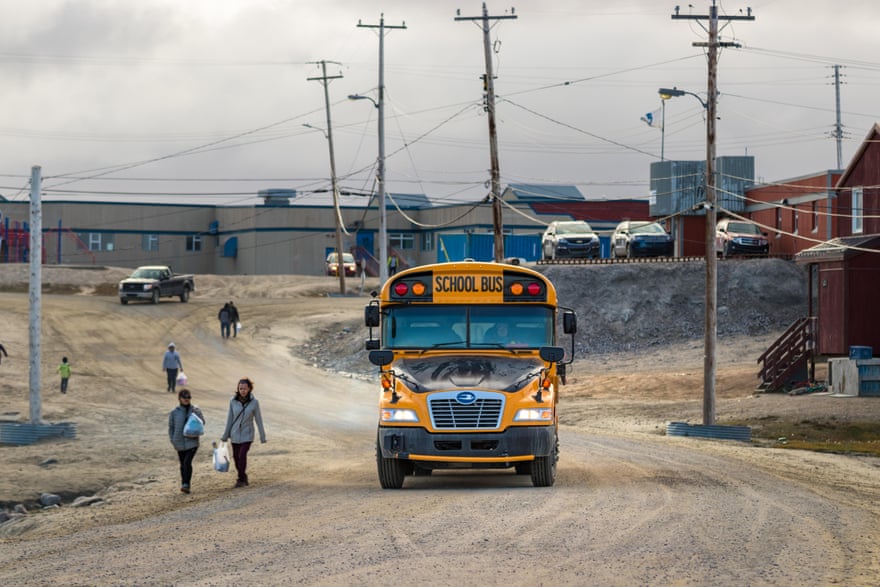
Nor did the Inuit raise them, as far as I know. I did many interviews with Inuit about the history of the north, in which there was extensive focus on Inuit-Qallunaat relationships. People often shared with me their dismay and indignation about the way southerners had treated them. They spoke in detail about conflicts, sometimes violent, with white people, and about how government had not paid due attention to their needs and feelings. But they did not say anything about what might have been going on inside Horne’s house. Did they not know? Was that because the children did not tell their parents what was happening? And does this take us back to ilira – the way in which this particular Qallunaaq intimidated the children, and perhaps the parents, too?
In crucial ways Horne was very much a Qallunaaq of that era – occupying a position of high status and authority, part of the systematic transformation of Inuit life and consciousness through the school system, and behaving with a good deal of self-importance. He learned Inuktitut, but did not speak it, which only added to this haughtiness. He also benefited a huge amount, I suspect, from the way Inuit at that time often acquiesced to southerners whose roles gave them authority within the settlements.
There is much more to be said about these events, and all the questions to which they give rise. I don’t have answers, though I have thoughts about each part of it – thoughts that lead to some of the most agonising aspects of Inuit recent history.
Inuit elders, and others with extensive experience of the north, point to sexual abuse as a key factor in the rise of youth suicide in their communities. When people in Lake Harbour, now renamed Kimmirut, some years after his conviction, symbolically burned down the building where Horne had been the teacher, they were getting rid of a physical reminder of the damage he did to their children. Horne is pointed to as the direct cause of many deaths in each of the places where he was a teacher, and as a prime example of those responsible for the terrible and continuing epidemic in which abuse has laid the foundation for suicide among the young.
Horne was a teacher in the Canadian Arctic for almost 15 years, from 1971 to 1985. He taught in six different Inuit communities. He was first charged with sexual crimes against children in 1987, was found guilty of molesting 24 boys and sentenced to a prison term of six years. Subsequently, 50 men brought more charges against him. In 2000 he pleaded guilty to 20 cases, and was sentenced to a further five years. In 2008 he was found not guilty in relation to 10 more cases. Many of his victims have pressed for compensation from the government. By 2015 awards had been made to 152 of Horne’s victims, at a cost to the government of CA$36.5m. They had been between six and 16 years old when Horne assaulted them.
In January 2015, a former Catholic priest, Eric Dejaeger, was found guilty of the sexual abuse of 32 children in the high Arctic community of Igloolik between 1976 and 1982, the same time as Horne was committing his crimes. Journalists covering Dejaeger’s case reported that he apologised to the court, with some of his victims in attendance – apparently they cried out in grief and fury as he stood there – and asked for forgiveness. He insisted he would never offend again. He was given a 19-year sentence, reduced to 11 with time already served, and was released on parole in June this year. Horne, after he had served his sentences, moved to Latin America.
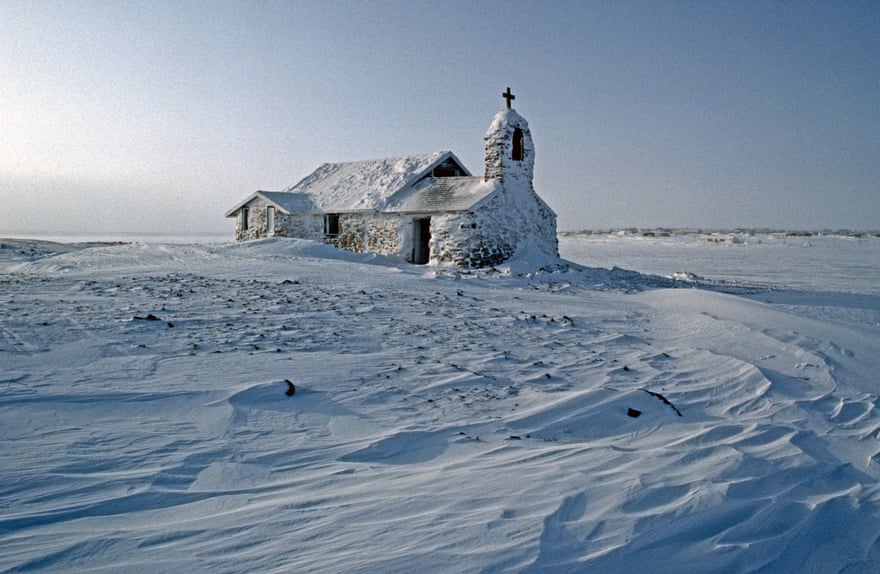
Dejaeger and Horne are two of many such offenders – some charged and imprisoned, many long since dead or hiding in legal obscurity. In time we would learn the extent of sexual predation in the residential schools to which thousands of Indigenous children in Canada were sent. Authority at the colonial frontier is exaggerated by geography and politics: the sheer distance from administrative centres delivers to representatives of education and God, when they appear in remote, vulnerable Indigenous communities, an almost magical esteem and charisma. The places they work are isolated, and their lives are further hidden within the isolation. The preconditions for abuse are in place. The victims and their families are intimidated and driven into silence. Southerners, including anthropologists like myself, failed to spot either the abuse or the abusers.
Today, 40 or 50 years on, much is clear that was then opaque. This clarity includes the terrible tragedy of Inuit suicides. The teenager who trashed Horne’s home was a warning of a virus of anguish, all the pain that was fomenting. The most dire consequences were still to come.
In 2002, 20 years after I had last been in the Arctic, I returned. The Ontario landscape, at the fringes of Ottawa, spread out in the grey grip of the coldest part of winter. A taxi took me through a cold and gloomy dusk to my hotel, where a large brown envelope was waiting for me at reception. I took it up to my room, thinking here would be the arrangements for the meetings and travel in the coming days. I unpacked, and then sat down at the room’s tiny desk and opened the envelope.
A government official in the new Inuit administration of Nunavut had invited me to visit Iqaluit, the largest town in the eastern Arctic. Nunavut was the name the Inuit had given to their territory – a new jurisdiction won through the campaign for their rights to their own lands, and which had been created in April 1999. Nearly 700,000 square miles of the north, the homeland of 30,000 Inuit, the realisation of a political dream. Now I had a chance to go to the decolonised Canadian Arctic. The invitation arose from publication of my book, The Other Side of Eden. I was being asked to return to the north to share thoughts about its history and to meet with some of those working in the new Arctic.
I opened the brown envelope and took out five pages of typed information. No note about arrangements, and no indication of who this was from. Just a long list, a table of facts. With a row of headings: place, gender, age, method. It was suicide data: a list, for the years 1999-2001. The places were all Inuit communities in Nunavut, including the ones where I had lived, and others where I had stayed or passed through 20 years before. Some were small villages of a few hundred people. The largest – Iqaluit and Rankin Inlet – numbered more than 2,000. But they were all on the list, every kind of Inuit community. The list was long: dozens of cases. I recognised many family names: the children and grandchildren of men and women I had known, travelled with, lived with and learned from when I had been in their villages and homes.
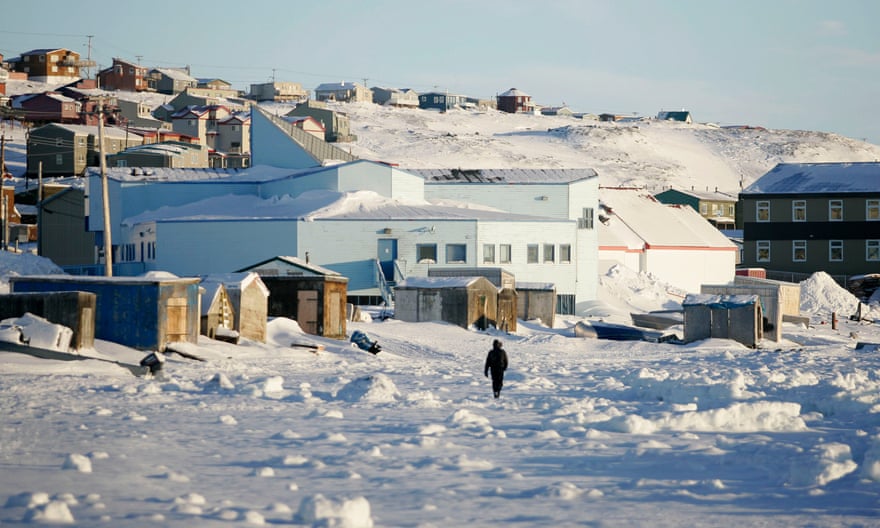
There was no summary of the facts, no analysis of the cases – just a line for each one. But it was easy to see the pattern. About two thirds were men, and one third women; all but one or two were between the ages of 15 and 30; almost all had died by hanging.
I had known, of course, about many of the stresses in indigenous peoples’ lives, and had written about the colonial process and some of the damage it caused. In the 1970s I had even written one paragraph about a possible future danger of Inuit suicide. But I had not imagined how many lives had been taken in this way. By the time I had read to the end of the last page of the document, I knew that this represented a suicide rate at a terrifying level. Every community had more than one case – the most isolated as much as the administrative centres. I was reading through a catalogue of disaster. I felt chilled with shock.
Using a few basic facts about overall Arctic population and some simple maths, I worked out that the Inuit suicide rate revealed in this list was at least 50 per 100,000; the rate for young Inuit men was at least 100 per 100,000. Suicide rates have long been expressed in these terms, and calculations for very small communities are statistically strange, since a few cases can give very high overall rates. I knew, though, that the rate for Canada as a whole at that time was about 12 per 100,000. The numbers might be unreliable as statistics, but they screamed out a terrible reality.
I also felt that these sheets of paper were confronting me with questions I had to face, accusing me of something I had to answer for. Not paying attention to, not writing about, the north as it transformed after I was there? Failing to act on the first warning of this, when word came from Baffin Island in the 1970s that two young women had killed themselves? Not seeing something that spoke to this transformation, that may have been the beginning of these facts, when I was there? Not interrogating deeply enough all that I had known about Ed Horne? Or something more elusive than all this?
Imade two journeys to Iqaluit to understand the reality behind the list of suicides. I met with men and women I had known many years before: one of them, Peter Kattuk, was now a minister in the new government. I went to his office and we talked for a long time about the journeys we had made together, looking at a map as we found the sites of so many stories. Peter also told me about the rise of suicide among the Sanikiluaq young. The joy of shared memories, the thinking back to joyous times, was undercut by the pain of those young people’s deaths. I met with other Inuit in Iqaluit who were working at all levels of the new government. They too wanted to tell me about their dismay, fear and grief; every single person I talked with shared their experience of the suicides. All had close relatives and friends who had died; many spoke of their own struggle with despair and times when they too had thought they may as well kill themselves.
I spoke with a cabinet minister in the new government who described to me the grief that is expressed at the funerals of the young who have died in this way, conveying the mix of incredulity and desperation that the death of the young must always cause. He talked about how his own family had felt when one of their children had killed himself. He described the cries of grief that lasted all through the child’s funeral. Then, as if thinking aloud, he said that this grief was a mistake, it should be avoided. Why? Because it is a message to the other young people, showing them what a big effect their death can have, how the parents, all the family, will be so hurt, will cry out for them. And this, he went on, maybe encourages suicide; this could be what they want, what they think they need – this cry of pain from parents. And we must come up with some measures, some new ideas about what to do. As he explained, I understood that when he said “we”, he meant the government, the whole wide community of people that was Nunavut. He sat at his desk, looking out of the window, sharing despair at the memory of his child who killed himself, and his doubts about ever finding a way through and out of this dark place. One couple summed this up for me in their own words: “Every day we wonder whose death we will be hearing about, who in our family will be next. We wonder when we will next be at one of those funerals.”
I did more research into the problem of youth suicide, looking at data from many parts of the world, speaking with psychologists and anthropologists who had been looking for both the facts and their explanations. The rates I had been shown for the Canadian Arctic were part of a global trend, a crisis in many Indigenous communities. The same flow of events was being described in Alaska, Greenland, Australia and much of Canada. Young people, especially young men, had suicide rates of anything between 75 and 250 per 100,000, many multiples of those in the same nations who were not from First Nation or Indigenous families.
Again and again, it was the descendants of hunter-gatherers who had the worst stories to tell. Since the 1980s, steadily increasing through the following two decades, large numbers of young people were killing themselves. And for all who succeeded, there were many more who made suicidal plans or attempts. In some studies in the US, as in my own findings for the Canadian north, as many as one in four young people said that they had had suicidal thoughts.
The human mind depends on speaking and listening, hearing and telling stories. If there is silence, then there is much about who we are that we cannot know. Silence in the home can leave a void in a child. This silence may come from the best of instincts, a loving wish to protect the child; or from the impossible burden of historical traumas; or may come from sadness and anger that cause a direct rejection of the child. There may be a crucial difference between unspoken personal grief and the silences of historical trauma, but the same kind of damage will be done.
Across the north where I had spent time listening to and learning from hunting peoples, abuse had taken several forms. Colonial power and regulations meant that the land and ways of living on and from the land had been placed under a new and alien system of governance. This was an abuse of indigenous rights and customs. Those who disregarded or broke the new rules were at risk of punishment. Denial of credit at a trading post; arrest by a Qallunaaq police officer; trial and prosecution by a judge and jury from the south. These events showed to the Inuit – were designed to show the Inuit – that they were no longer in charge of life in the north.
This was an abuse of power. Teachers and missionaries insisted that they, not the people who lived in the north, knew the truth about all the most important matters. This was an abuse of the mind. Mining companies, oil and gas corporations, and logging contractors came to the parts of the north where they could develop the resources they valued, and did all that they needed to do without regard to either the land or the people who had lived there and known it for generations. This was a violation of those people, and of the land itself. Furthermore, some of those who represented, advocated and implemented these abuses gave themselves the right to abuse the bodies of the children they said they were there to teach or to save.
Sexual abuse of children may be different in crucial ways from other forms of abuse: it is a direct assault on the most vulnerable of all. But it has a critical relevance to all other damage done: child victims of abuse are rendered unsure of themselves, and thus given an acute sensitivity to all the other forms of damage that they might then face. Sexually abused children can find themselves driven into and then caught in the deepest of silences, while needing, more than anyone else, to be cared for and heard and given a chance to heal. The wider abuses – of heritage, land and belief – mean that their chances of being given the care, offered a chance to have a voice, are minimal.
Damage to the society makes for silence, grief and anger on all sides. Those who would expect to have the job of passing on knowledge, insight, beliefs and all the skills that are the heart of a culture have been undermined. Those who have been abused devalue themselves. Parents have been caused to doubt the worth and validity of all that they were raised to be, and have lost confidence in all that they should be passing on to their children. Or the children have been persuaded that the parents have nothing of real value, no relevant truth to offer. So the line from the older to the younger generation is broken. Each is caught on their side of the line – the old not able to be parents as they would have wished to be, the young not able to look to parents for all that young people need. Thus the meaning of life as it was, as it should be, as each side of the generational divide needs it to be, is lost in uncertainty, grief and silence. The next generation is left with an absence of attachment, and a longing for the things they deeply need but, as small children, find that they cannot have.
by Hugh Brody. Adapted from Landscapes of Silence: From Childhood to the Arctic by Hugh Brody, published by Faber and available at guardianbookshop.com

